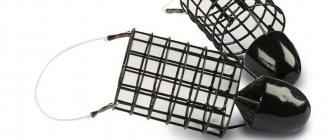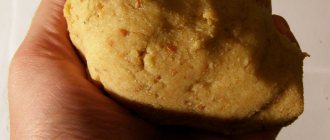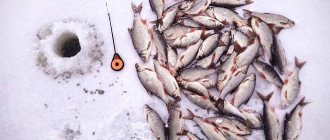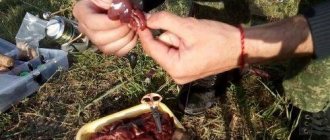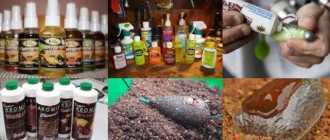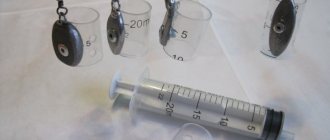One of the most pressing problems in fishing is how to keep the caught fish fresh. The most famous and common option is a cage.
However, this option has significant drawbacks. The first and main one is creating interference when moving the boat. Because of this, while moving, the cage has to be pulled out and stored at the bottom of the boat.
Another significant drawback is that large fish may not fit in the cage or, when placed there, may cause damage to the fish located there.

The use of kukan fundamentally solves the problem of preserving the catch, and it is always possible to make kukan with your own hands.
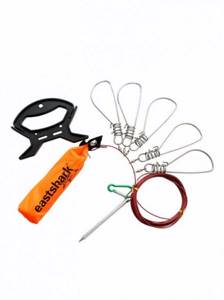
What does the term "kukan" mean?
This lightweight, simple to the point of primitive device allows you to keep caught fish alive for quite a long time.
Kukan device
The simplest kukan is a strong cord with a wire loop. To keep the kukan alive, a puncture is made in the lower jaw of the caught fish with a knife, and then a loop of the kukan is threaded through the resulting hole.
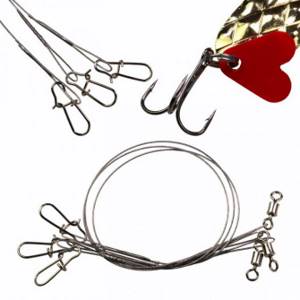
The fish is placed in the water, and the end of the kukan is secured with stakes on the shore or tied to the rigging of the boat.

Practical use
Let's look at how to use a kukan using the example of pike fishing in a boat. Let's say that we catch toothy fish with circles or a live bait fishing rod.
Before you start fishing, you need to properly attach the tackle to the boat. It is better to place a homemade kukan on the opposite side from the direction of casting. This way, the caught fish will not interfere with the landing of the next pike.

When catching a pike and lifting it into the boat, you should remove the kukan from the water, unfasten the last lower carabiner and place the toothy predator on it. If you start the bait with a nearby carabiner, then later you will have to pull the entire catch to the surface, which is difficult for the fisherman and is more likely to tire the fish. Imagine if you remove a large catfish from the water every time?
Kukan designs
A small knitting needle is attached to one end of the metal cable, and a loop is made from the opposite end of the cable. The loop is pulled under the gills and secured with a knitting needle.
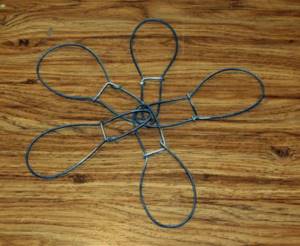
Wire loops are attached to the nylon cord. Such a kukan requires mandatory drying after it gets wet. The disadvantage of this design is the possibility of fish biting the nylon cord.
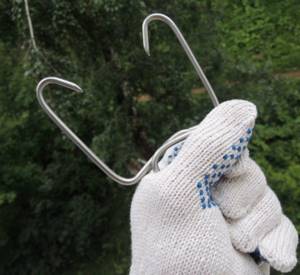
The metal knitting needle is bent in the shape of a triangle and fasteners are put on it. The top is sealed or folded into a clasp. This design allows you to store fish at a significant depth, which increases its shelf life.
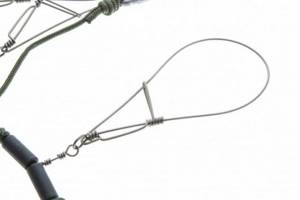
Kukan in the form of a fastener is made of steel wire about 3.5 mm thick. The wire is bent in the shape of a U sign. One end is bent at an angle of 90 degrees, and the opposite end is bent in the form of a loop. The resulting structure serves as a fastener.
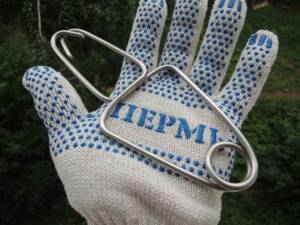
Pike kukan and its features
Kukan for pike must meet the following requirements:
- It is advisable that it be made of steel cable; plastic and rope ones may not withstand the jerks and teeth of a pike.
- The hinges must be made of steel and located on high-quality swivels.
- For pike kukan you need strong and rigid locks that will not come undone under the pressure of a predator.
It should be remembered that even after placing a predator on a kukan, it remains active for some time, so you need to keep an eye on the trophy. If there are several fish, it is recommended to keep the device away from the fishing spot so that the noise does not scare away the other fish in the pond. If the pike was severely damaged during the fishing process, then it is better not to put it on the kukan at all.
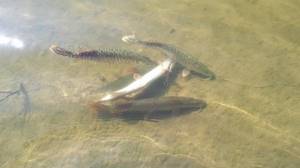
Photo: Pike on kukan
You can buy ready-made kukan at a fishing store; today they are sold in a large assortment. They are produced by companies such as Kosadaka, Salmo, Tri Kita, Siweida, Mifine, Cottus, Kaida, Flagman, EcoPro, GRFish and others. If you wish, you can make a homemade kukan.
How to make kukan yourself
So, to make a kukan for fish caught by yourself, the pre-prepared cable should be cut into 6 parts: 5 pieces of 0.7 m each and one of 1.5 m.

For a long section, you should alternately put on swivels and plastic tubes. On the opposite edges of the cable, 2 larger carabiners are secured with clamps. Small carabiners are connected to swivels of 2 pieces.
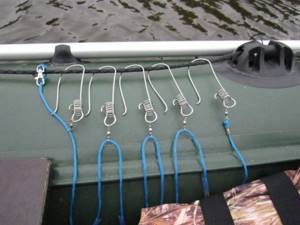
Loops should be made from 0.7 m cable segments, and their edges should be secured with clamps using a hammer. After attaching the loops to the carabiners, the kukan is ready for use.
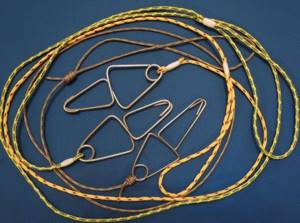
Note!
- A nod for do-it-yourself winter fishing - how and what to make good gear from. 115 photos and video tips from the pros!
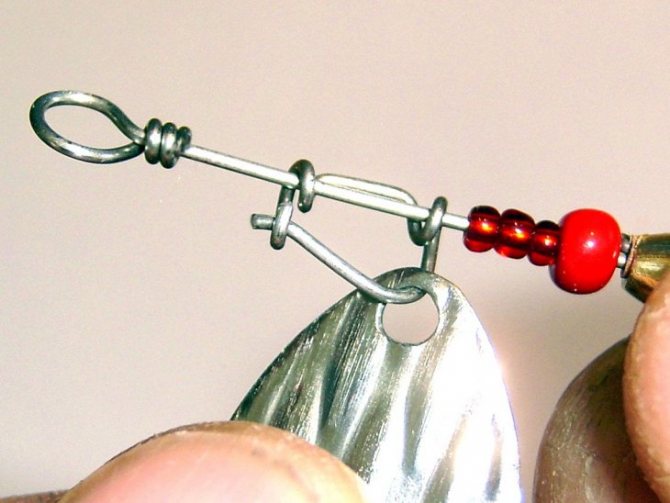
Do-it-yourself spinners - types, features of homemade spinners and their assembly (100 photos and videos)

How to minimize fishing costs? Useful tips from experienced fishermen and an overview of current solutions (65 photos)
How to prepare dough for crucian carp?
- Preparing the dough ↓
- Recipes for crucian carp test ↓
- Boiled dough ↓
- With sugar and vanillin ↓
- Dough made with canned corn juice ↓
- Dough with pea puree ↓
- Honey dough ↓
- On egg yolks ↓
- Milk dough ↓
Dough is one of the most favorite baits of crucian carp, especially in the warm season and in those reservoirs where crucian carp prefers plant foods. The optimal time for catching crucian carp with dough is from the end of May to the end of July.
Preparing the dough
The main types of test are:
- raw - the simplest production by mixing flour, water and other ingredients;
- boiled - raw dough boiled in boiling water with formed volume and shape;
- steamed - reached readiness by steaming.
The main requirements for the test are the following:
- should attract fish;
- should stay on the hook well;
- should not stick to your hands.
- garlic;
- vanilla;
- honey;
- caramel;
- sunflower oil;
- Strawberry juice;
- hemp oil;
- anise oil;
- cinnamon;
- coconut;
- fenugreek;
- sweet clover
Recipes for crucian carp test
Fishermen use many recipes designed for catching crucian carp. It is impossible to consider all the dough recipes, so we will focus on those that are the basis for all the others.
With semolina and garlic
How to catch more fish?
I have been active fishing for quite some time and have found many ways to improve the bite. And here are the most effective:
- Bite activator. Attracts fish in cold and warm water with the help of pheromones included in the composition and stimulates its appetite. It’s a pity that Rosprirodnadzor wants to impose a ban on its sale.
- More sensitive gear. Reviews and instructions for other types of gear can be found on the pages of my website.
- Lures using pheromones.
You can get the rest of the secrets of successful fishing for free by reading our other articles on the site.
- With constant stirring, cook a mixture of one part semolina and two parts water. Two minutes after boiling, remove from heat. Cool the semolina and add 1-2 cloves of grated garlic. Mix everything and, adding dry cereal, bring to dough consistency;
- make a mixture of wheat flour and semolina. There should be half as much semolina. Gradually adding water, knead the dough. The finished dough should rest for 5-10 minutes. Pour a little unrefined sunflower oil into your palm and mix it evenly into the dough. Add 0.5-1 clove of grated garlic to the dough;
- boil 1 glass of water. Stirring constantly, add a glass of semolina. Immediately remove from heat, continuing to stir for another 5 minutes. Cover with a lid until it swells and cools completely. Divide into several parts and soak in various flavors.
Boiled dough
Boiled dough recipes:
- knead a stiff dough from flour, egg yolk and water. Divide into balls the size of a pea or smaller (depending on the expected size of the fish). Boil in boiling water until it floats. Remove from water and cool. Grease the surface of the balls with vegetable oil. Cooking can be replaced by frying in batter until light brown;
- mix wheat, rye flour and water in equal proportions to form a stiff dough. Add the yolk of a boiled egg and a teaspoon of honey. Mix everything well. Divide the dough into pea-sized balls and place in boiling water. Cook until the balls float. After floating, collect the balls, rinse under cold water, and let them dry. Grease with unrefined sunflower oil;
- mix wheat and rye flour in equal quantities. Mix the dough with water. Stir unrefined sunflower oil into the dough. Divide into balls of desired size. Boil in boiling water until it floats. Remove from boiling water. Rinse. Dry. Grease with oil.
With sugar and vanilla
- Dilute a teaspoon of sugar and a bag of vanillin with 50-70 g of water. Add flour and knead the dough to the required density. Thoroughly mix 5-10 g of unrefined sunflower oil into the dough;
- make a mixture of a glass of wheat flour, a teaspoon of powdered sugar and a teaspoon of vanilla. Gradually adding water, knead to the required density.
Dough made with canned corn juice
Mix semolina in equal parts with breadcrumbs. Instead of water for kneading the dough, use canned corn marinade. Sometimes a few crushed corn kernels are added to this dough.
Dough with pea puree
- soak the swollen peas in cold water for 2-3 hours, rinse and add a small amount of water. Cook over low heat in an enamel bowl, stirring occasionally, for 1.5-2 hours until pureed. Add semolina or flour and continue cooking, constantly stirring the mixture until thickened. When ready, mix with a bag of vanilla. The last step is optional;
- Pour boiling water over dry peas and leave for 6-8 hours. Cook porridge from the resulting mass and cool. Add anise oil or vanillin. Grind oatmeal with a blender or mixer. Mix flakes with semolina in a ratio of 1:2. Use the resulting mixture to bring the pea porridge to a dough state.
Peas ground in a coffee grinder to a porridge state are cooked for 20 minutes.
- monastery Add semolina to the hot pea puree, stirring constantly. The ratio of puree to semolina is 3:2. Let it cool. The mass should be soft, but viscous, and should not stick to your fingers. Suitable flavorings include anise, honey, and garlic juice. Leave some of the bait without flavorings. Crucian carp really like the taste of peas.
- Steam instant pea porridge in boiling water. The finished product should resemble a jelly-like mass. Thicken with semolina. Stirring constantly, add wheat flour until a dough consistency is obtained. Flavorings may not be added;
- Mix the cooled pea porridge with wheat flour until it forms a dough. Use without fragrance.
Honey dough
- knead the dough from wheat flour with a raw beaten chicken egg. Add 5-10 g of unrefined sunflower oil. Mix. Add a teaspoon of honey. To stir thoroughly;
- cook instant pea porridge. Thicken with semolina and wheat flour until the consistency of the dough. Add 1-2 teaspoons of honey. Press honey into dough;
- mix 1-2 parts of semolina with 10 portions of flour. Knead the dough using syrup from honey dissolved in water. Stir unrefined sunflower oil into the dough. You can add grated garlic.
On egg yolks
- Mix semolina, wheat and corn flour in equal parts. Knead everything with 1-3 egg yolks. Add flavoring;
- mix two tablespoons of wheat flour, a tablespoon of sugar, and egg yolk. Stir unrefined sunflower oil into the finished dough.
Milk dough
- Add flour to cooled boiled milk. Mix thoroughly until a homogeneous thick mass is obtained. Transfer the resulting mass to a frying pan. Stirring constantly, bring to a dough over low heat. Mix the boiled yolk of a chicken egg and a small boiled potato into the dough;
- mix two cups of wheat flour, 4 tablespoons of sugar and half a glass of milk. Knead until done. Add flavoring.
Using kukan
To ensure that the caught fish is not injured and remains alive, it is secured with a cord or cable threaded through a slot in the lower jaw or gills, and then placed in the water.
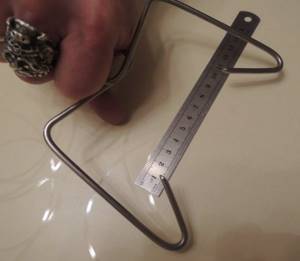
Being in its natural environment, the fish remains viable and does not require preservation for a long time.
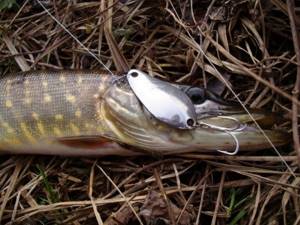
To prevent especially strong and large specimens from coming off, it is necessary to attach an additional wire clamp to the end of the needle.
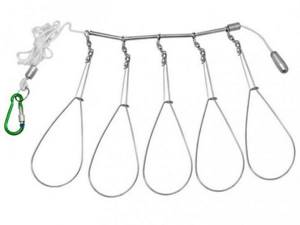
A loop on the kukan cord will help you carry it on the angler’s waist belt.
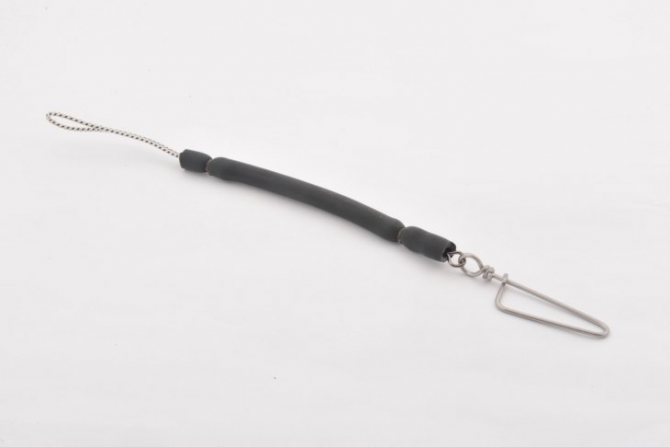
Kukan for underwater fishing is fundamentally no different from the usual one, and you can also make it yourself. An integral part of the kukan for underwater hunting is a loop on the kukan cord, which allows it to be attached to a carabiner on the underwater hunter’s belt.
Note!

Do-it-yourself boat motor - tips for beginners, projects, drawings and step-by-step description of the construction of the main components and elements (video + 120 photos)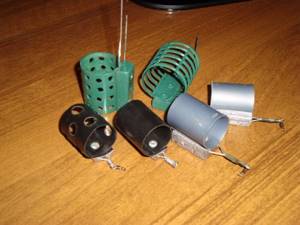
Feeder for winter fishing - secrets of use and techniques for feeding fish in winter (115 photos)

Bottom gear - the most effective types of equipment and features of casting techniques (95 photos and videos)
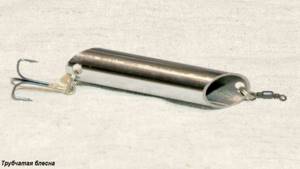
What is kwok
A catfish quok is a special device used by a fisherman to activate and lure fish to the fishing spot where the bait is supplied. The operating principle of this simple device is based on creating a sound effect by performing a series of blows on the water with the instrument. It is worth noting that this accessory is not a direct fishing tool, but serves only as an auxiliary element for attracting a predator.
Due to its design features, the working part of the instrument, in the form of a so-called hoof, when it hits the surface of the water, creates a sharp squelching sound, which, with its acoustic properties, affects the behavior of the fish, forcing it to move in the direction of the signal. The reasons for this behavior of catfish under the influence of the sound of quoting are not fully understood, but the fact of the reaction has been thoroughly established, which catfish fishermen successfully use when catching a trophy. This auxiliary tackle for catfish can consist of either solid material, made without joints, or it can be assembled from dissimilar parts. The main elements of the device are the handle, cutwater and the working part, the hoof.
DIY photo of kukan
Read here Do-it-yourself shell: production and use in summer and winter (145 photos)
Help the project, share on social networks 

0


